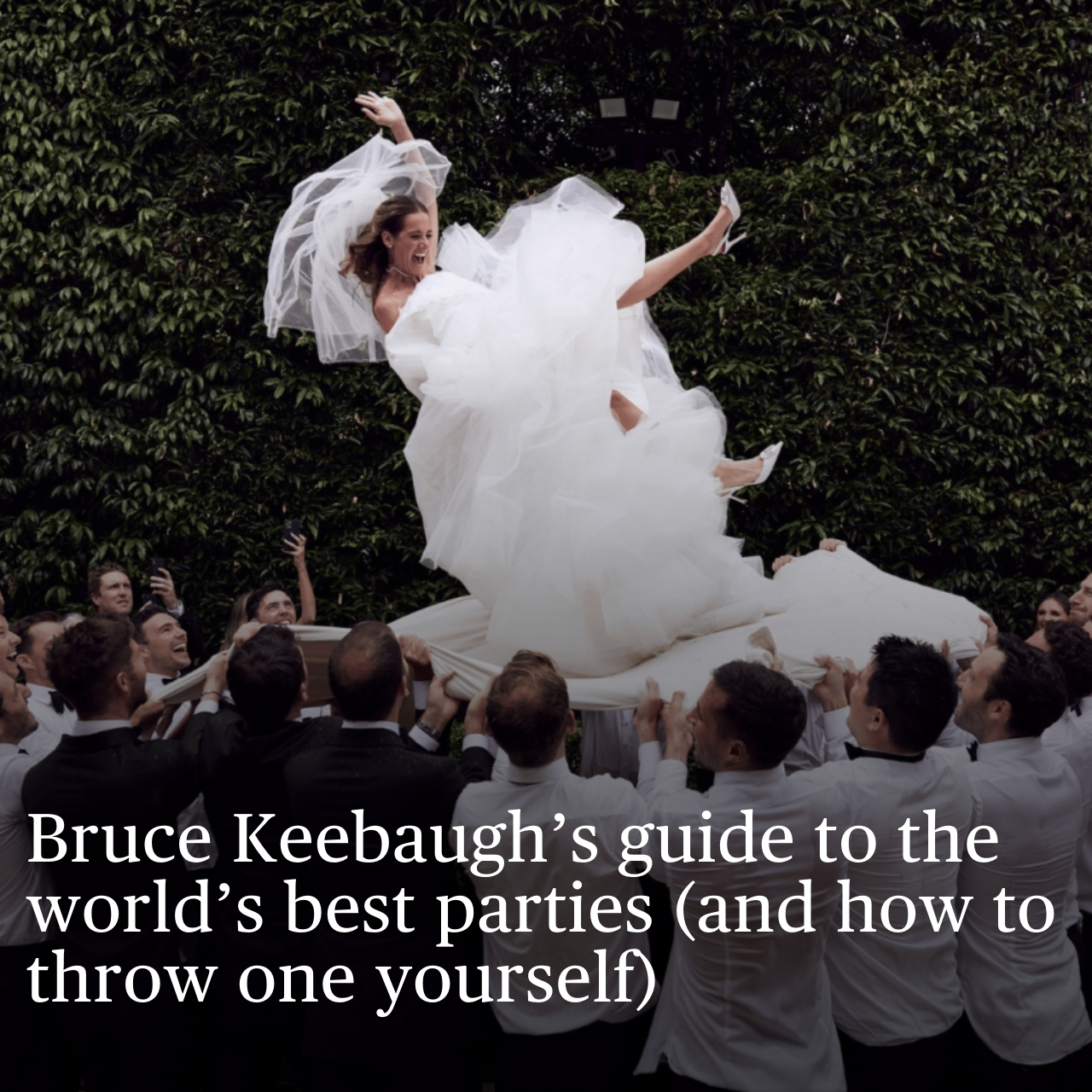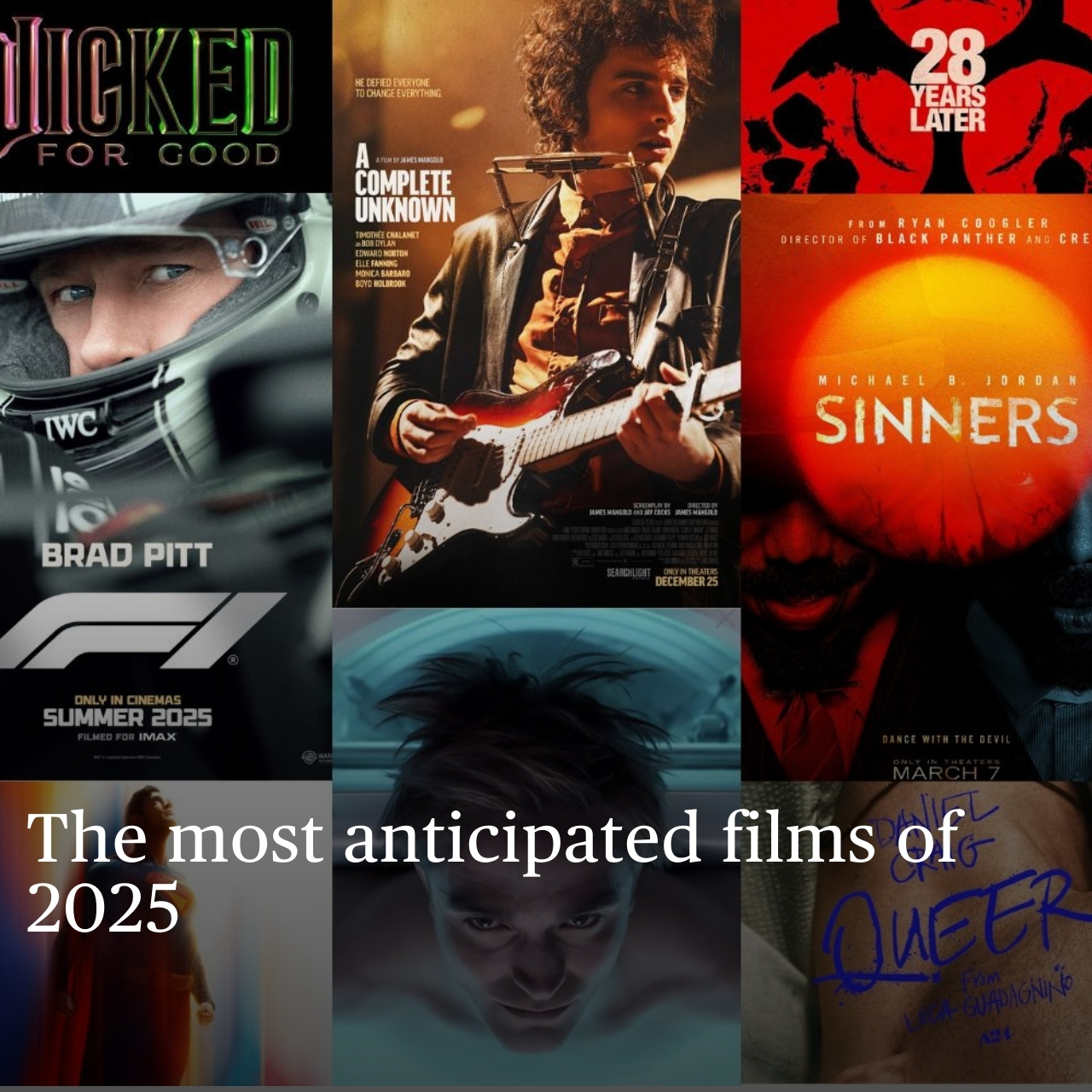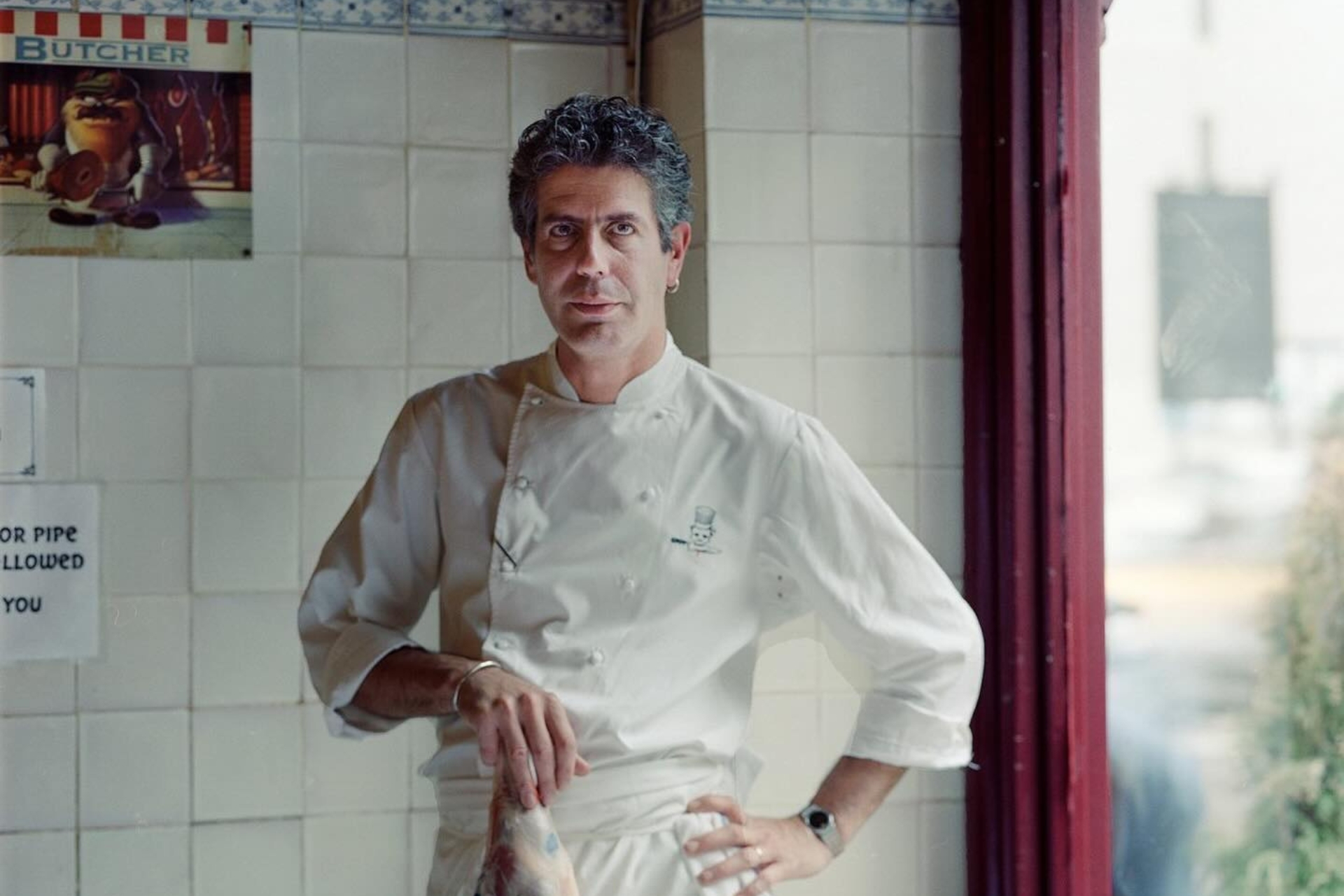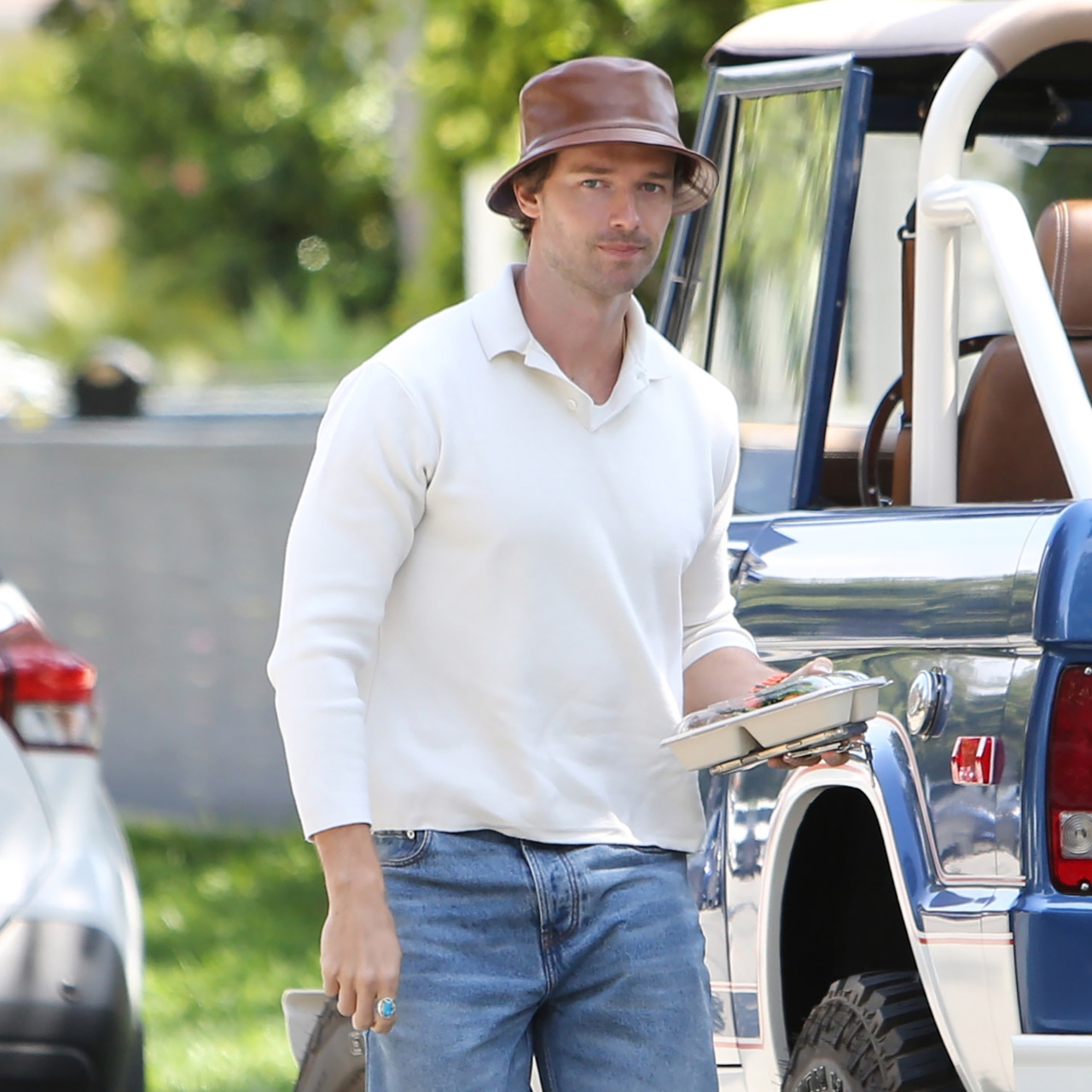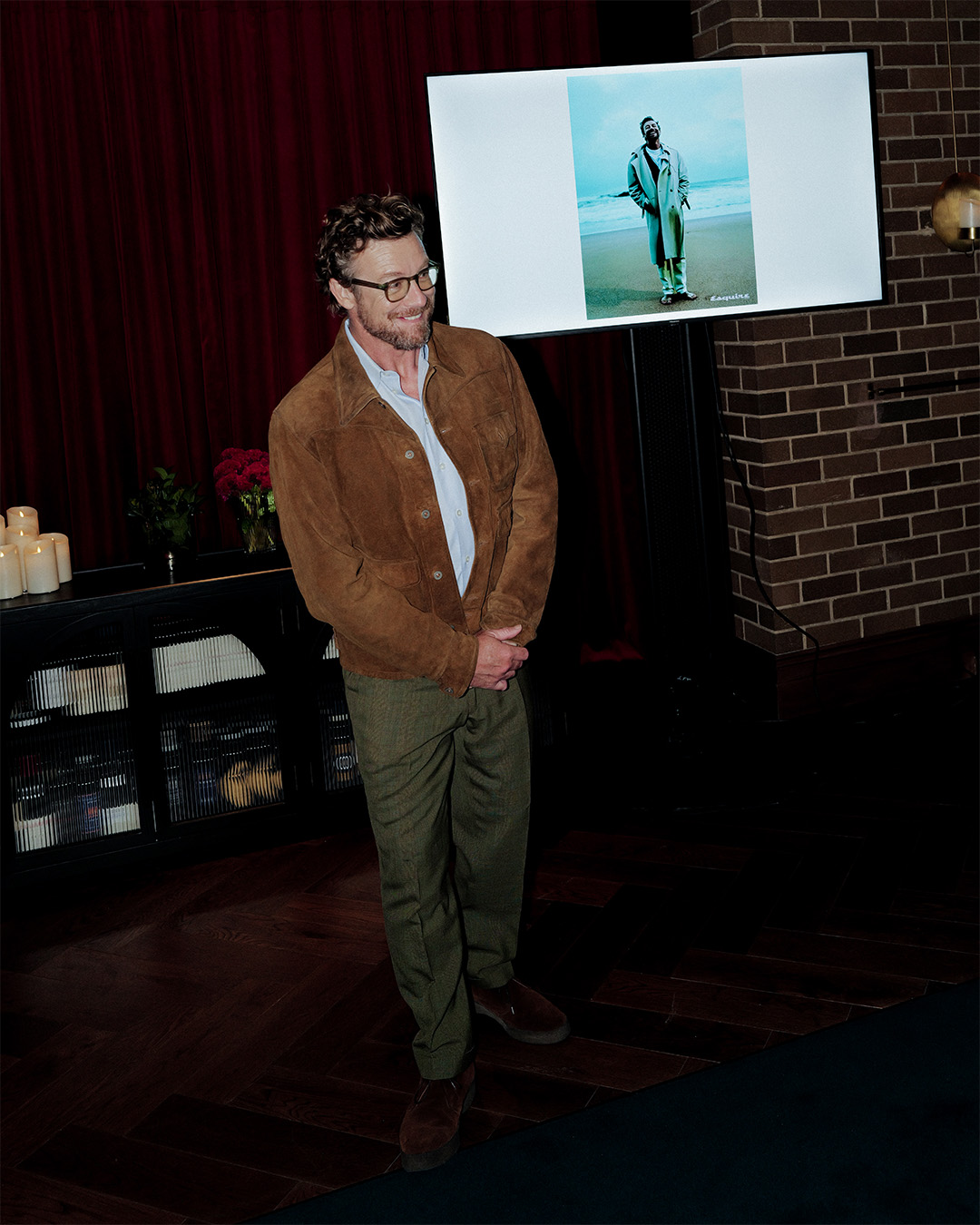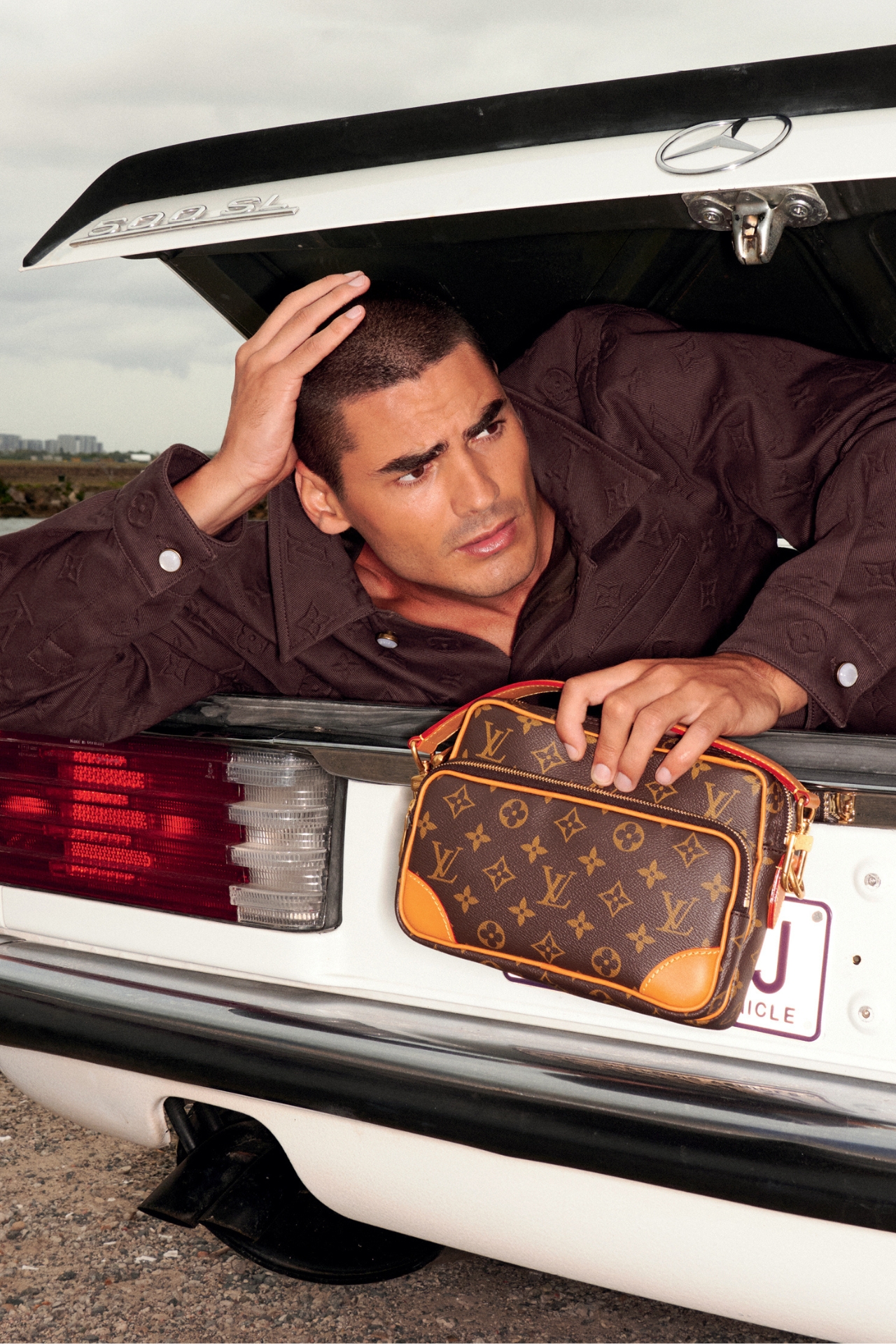28 things I learned at Watches & Wonders
From fancy new bracelets to the thinnest tourbillon wristwatch ever made, here's what one Esquire editor saw at the Swiss horology convention

LAST WEEK I SPENT three days at Watches and Wonders Geneva, the biggest event in the watch calendar.
Every year, tens of thousands of journalists, retailers, industry professionals – and since 2023, the general public as well – descend on the Palexpo Exhibition Centre, a 100,000 square-meter enormodome adjacent to Geneva International Airport, to see many of the world’s biggest watchmakers, including Rolex, Patek Philippe, Cartier and Jaeger-LeCoultre showcase their latest creations under one roof.
The industry has been buffeted by falling exports and Donald Trump, but the mood at this year’s event was cheerful enough, with new names including the luxury Roman watchmaker Bulgari bumping the number of exhibitors up to a record-breaking 60.
For the brands, exhibiting represents a considerable investment – a trade-off with the media coverage it generates – and it is not for everyone.
“I won’t sell one more watch at Watches and Wonders Geneva than if I weren’t there,” Breitling’s CEO Georges Kern told The Business of Fashion. “It’s only ego value.” (On Wednesday night Breitling launched its latest watches at its Geneva boutique a short drive from the Palexpo.)
Brands are charged up to CHF 2,000 [AUD$3,914] per square metre to exhibit, with booths for the top-table names running to thousands of square meters, in structures that resemble Bond Street stores.
And that’s before they have added in costs for kitting them out with deep pile carpets and plasma screens, commissioned hanging art-sculptures, or shipped in a F1 car to display.
“The insurance on that alone was an absolute nightmare,” a representative for one Formula 1-adjacent brand told me.
“This week will take £2m [AUD$4.2m] out of the marketing budget,” another brand rep said. “But you have to be here. It’s absolutely worth our while, and we wouldn’t have it any other way.”
Journalists like me go from stand-to-stand for prearranged half-hour appointments, gathering promotional tote bags along the way, while inspecting the new releases and asking nosy questions of the brands.
Here’s 28 things I learned this year.
Colour Ran Riot

Gone are the days of men’s watches coming in black (sport) and white (dress).
Colourful dials were everywhere at W&W ’25, including but not limited to, affordable new Sellita editions of the Oris Big Crown Pointer Date models in yellow, blue and lilac; H.Moser’s Endeavour Pop Collection in retro-fabulous pairings of turquoise and orange coral, Burmese jade and pink opal and lapis lazuli and lemon chryoprase; Nomos Glashütte’s new Club Sport Neomatik Wordtimer in “jungle”, “canyon”, “glacier”, “magma” and “dune” and Rolex Oyster Perpetuals that came in muted lavender, warm sandy beige and fresh pistachio green.
Fun times!
Cartier releases a lot of watches
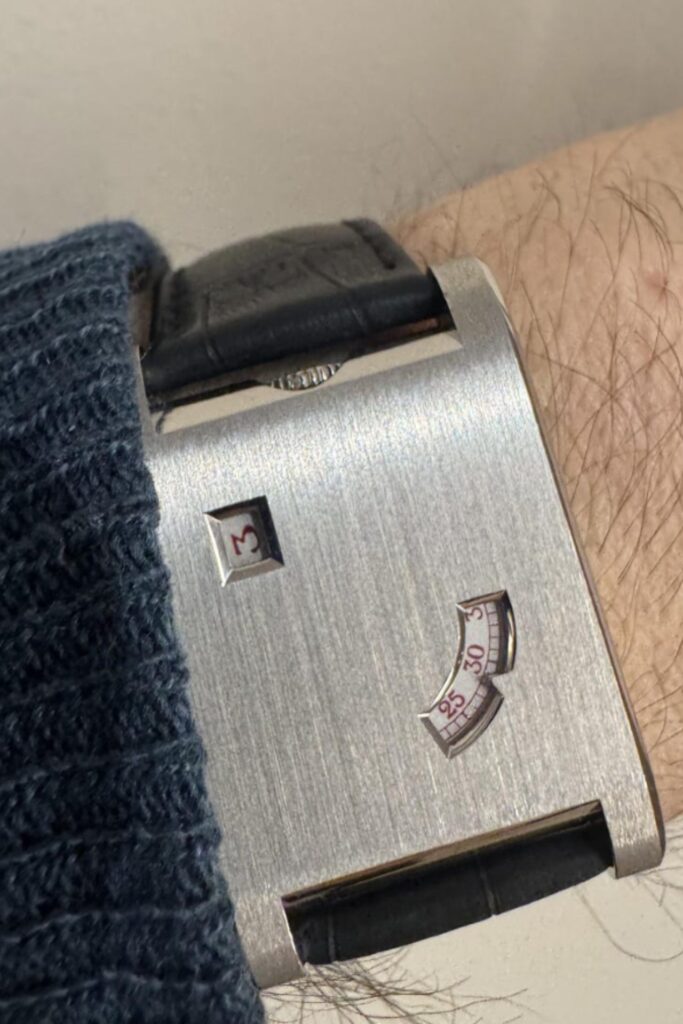
Every year, some brands choose to show lots of new timepieces, while some brands show just a few.
At the 2023 fair, A. Lange & Söhne presented a single watch: the Odysseus Chronograph, setting a new record for footage of exhibition space vs. actual new product.
At the other end of the scale, there is Cartier.
The 178-year-old jeweller delights in plumbing its extensive back catalogue, putting out dozens of new versions of deathless designs like its Cartier Tank, and reanimating barely remembered models, all based on the inscrutable decision-making process of Pierre Rainero, Cartier’s image, style and heritage director, who has held that unimprovable job title for more than 40 years.
(“We have no rule! I have my own ideas. It’s a consensus of different feelings from different people. And why not? If we internally have a feeling that a shape is a ‘good shape’ that year, it’s a good sign,” he ‘revealed’ of the decision-making process to the About Time newsletter last year.)
Anyway, this week Cartier announced 70 new watches – “novelties” in the parlance – in a presentation that went on for so long most attendees had to make their excuses and leave before the end. They were late for their next appointment.
“We go from €3,000 [AUS$5,450] to €1m [AUD$1.8m] so we try to animate for all price points,” explained a representative from the band, as the trays of Cartier Tank Louis Cartiers, Cartier Tressages, Cartier Panthères and Panthère de Cartier Bangles kept on coming.
You’ve never met anyone who doesn’t like Cartier’s watches, but this year the consensus decreed that the best watch, some said of the whole fair, was the Cartier Privé Tank à Guichets.
Every spring, the brand revisits and reimagines something aimed at enthusiasts, under its Cartier Privé banner – and releases it as a limited edition in precious metals.
Having previously set the bar high with the Tonneau, the Tortue and the Normale, for 2025 it bought back a design dating back to 1928, once the wristwear of choice for jazz legend Duke Ellington.
The Tank à Guichets was an experiment.
It took the case of the Tank LC but obscured the dial with a sheet of brushed gold, with two small windows (guichets in French), the upper one showing a “jumping hour”, which advanced one turn when the minutes sector in the opening below it reached 60.
A product of the machine age, it proved hard to tell the time with and was a commercial flop.
Less than 400 were made in its original run, and the Tank à Guichets has reappeared in sparse runs in the catalogue only twice since, in 1997 and 2005.
Today, “jumping hour” watches feel like charming throwbacks, and something like a mechanical magic trick for the wrist.
When it goes on sale in September, the Tank à Guichets will come in platinum, yellow gold and pink gold.
There’ll also be a fourth version, the platinum model on my wrist in the photo above, which has a unique layout, with the guichets turned on their sides.
This one is a limited edition of 200.
. . . actually, the “jumping hours” time has come
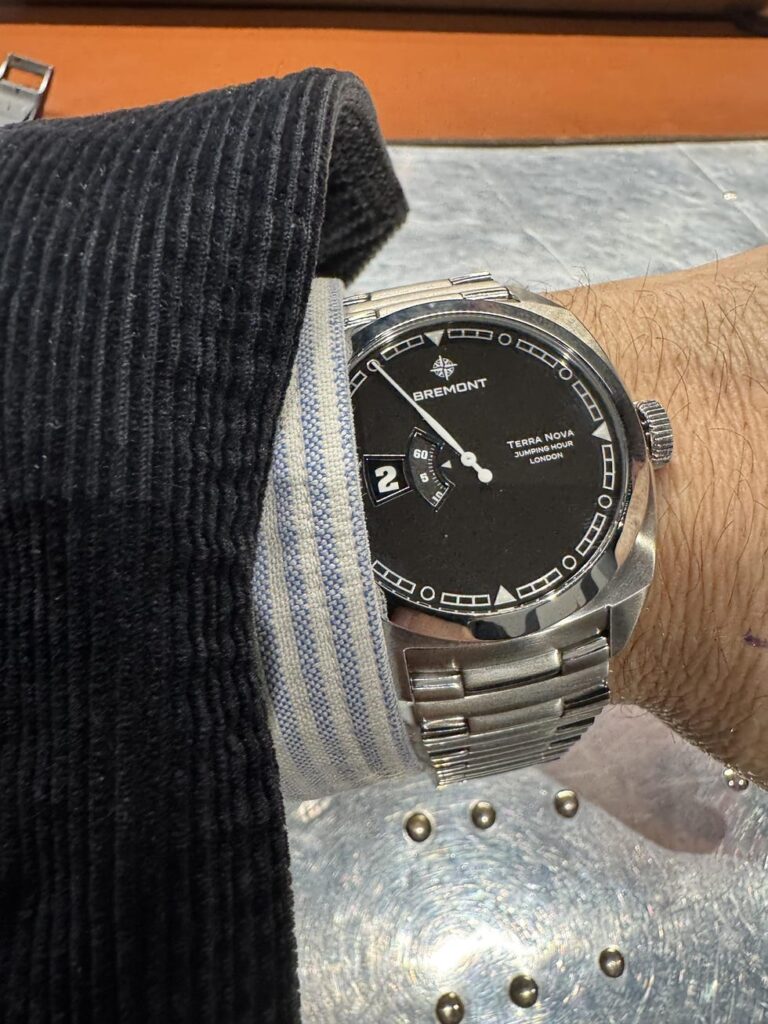
The complication was also represented with Bremont’s new Terra Nova Jumping Hour, Chopard’s metiers d’arts remix of its L.U.C Quattro Spirit 25, Chanel’s Monsieur de Chanel Superleggera Bleu Edition and the AUD$1,816 Maen x Nico Leonard from loudmouthed YouTube irritant Nico Leonard.
It’s a numbers game at Tudor
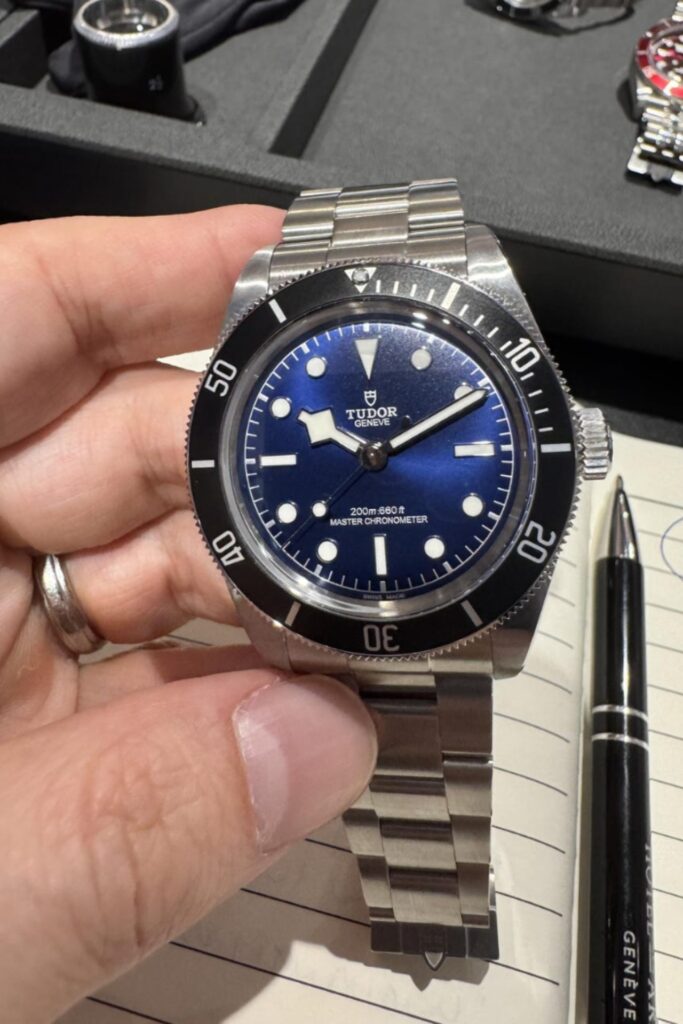
Tudor’s naming system for its flagship dive watch, the Black Bay, is so confounding its returns department on Boxing Day must be run ragged.
There’s the Black Bay 58 which is 39mm in diameter, the Black Bay 54 which is 37mm in diameter and the Black Bay Chrono which is 41mm in diameter.
There are also six different watches called the Black Bay S&G and five more simply called the Black Bay, plus the Black Bay Ceramic, all of which measure 41mm in diameter.
Now comes a new line, the Black Bay 68 – which measures 43mm, though at this stage is anyone still counting?
Apart from the new size, this one comes in two dial colours (sun-brushed silver or “Tudor blue”), a new bracelet and with a movement that’s now both COSC and MATAS certified for accuracy.
The “68” refers to 1968, the year the brand introduced its recognisable “lollipop” seconds hand. Except that actually happened in 1969.
“All the way along it was supposed to be the Black Bay 69,” a Tudor representative told me.
“Until someone in Switzerland realised you can’t call a watch that.”
Bracelets are a thing now

Rolex came up with new bracelets for both its Land-Dweller and its 1908, a flat link Jubilee-inspired bracelet with a hidden clasp for the former, and the jewellery-adjacent 18ct gold “Settimo” for the latter; Tag Heuer came out with a beads-of-rice bracelet for its Carrera while Jaeger-LeCoultre came on strong with a Milanese link bracelet in pink gold for its Reverso Tribute Monoface Small Seconds, something that was every bit impressive as the watch.
“Sixty per cent more of our sales come from watches on bracelets than they did 18 months ago,” Bremont’s Davide Cerrato told me. “People really, really like bracelets.”
It was the biggest Watches And Wonders yet
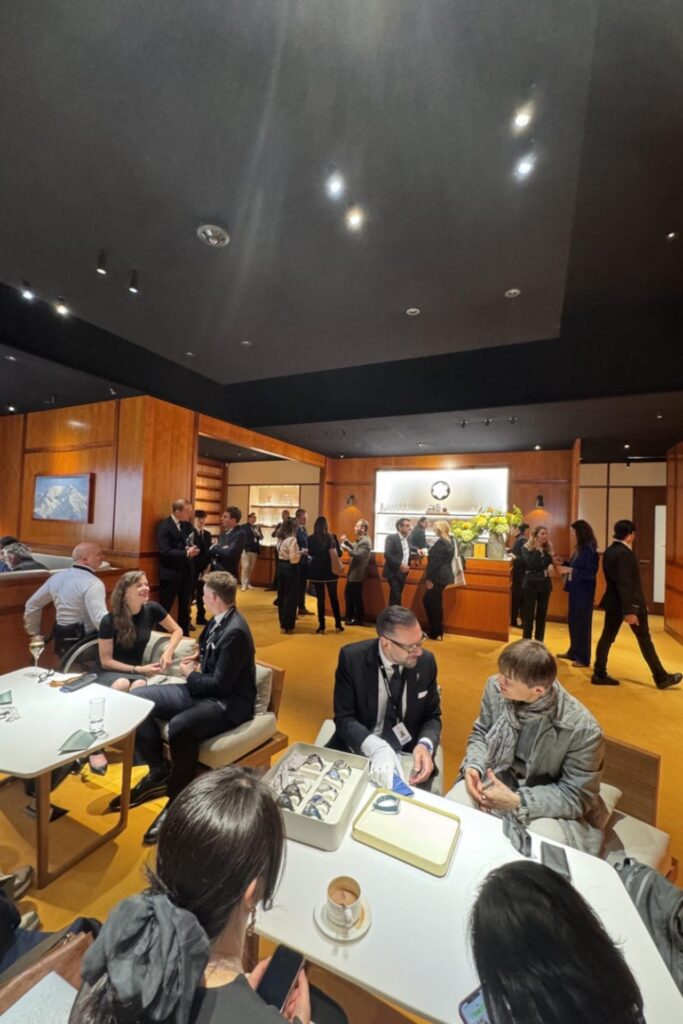
“We were 48 brands [exhibiting] in 2023, 54 last year and there are 60 brands this year, with six newcomers joining, including Bulgari,” Matthieu Humair, CEO of the Watches And Wonders Geneva Foundation told me. “It’s a record edition in terms of numbers of brands, numbers of content, numbers of novelties. It’s the place to be in Geneva. It is the largest watchmaking event in the world.”
Humair was encouraged by the demographics of the attendees, too.
“Like last year, we have a very young age of public visitors, an average age of 35. And 25 per cent of the ticket sales sold to people who are less than 25 years old.”
Tag Heuer revved up its Formula 1 watchTag Heuer revved up its Formula 1 watch
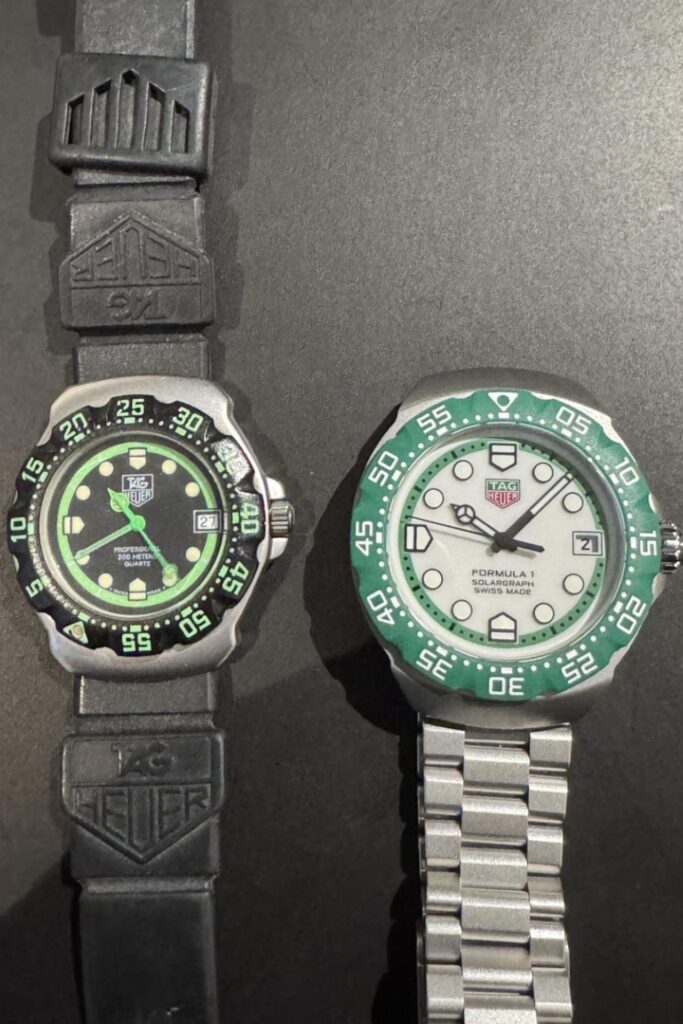
The highlight of Tag Heuer’s new releases was its updated Formula 1, the watch line that first appeared in 1984 as a colourful and fun model originally aimed at surfers and inspired by the watches-as-lifestyle accessories attitude of Swatch and Casio, before being repurposed as a tie-in for the brand’s new association with motorsport. (Hence the unusual prospect of a summery plastic dive watch with a clicky bezel being sold as a tie-in for high-adrenaline motorsport).
A water-testing limited edition rerelease as a collab with the streetwear brand Kith last year proved a hit, and now the Formula 1 is properly back in the line-up.
There are nine versions in the collection, all of which come with refreshed architecture, a new 38mm size and the brand’s solar quartz movement, meaning they’re now powered by the light.
The distribution model for the series is a little opaque – the more sober colourways are “core collection”; the jazzier ones are limited editions – but most people agreed the brand had got the Formula 1 Solargraph right.
Some were more emphatic than that.
“I think we’ll look back at 2025 and see this as a pivotal moment in the brand’s history,” one watch business expert told me.
“There’s no reason why that watch can’t be Tag Heuer’s equivalent of Omega and Swatch’s MoonSwatch. The Swiss watch industry exports 17 million units, with quartz watches making up more than 10 million of that, largely thanks to the MoonSwatch’s popularity.”
“Add in the perfect tie-in with Formula One motorsport, whose popularity is only growing, and there’s every chance the stars have aligned for them on this.”
Zenith turned blue
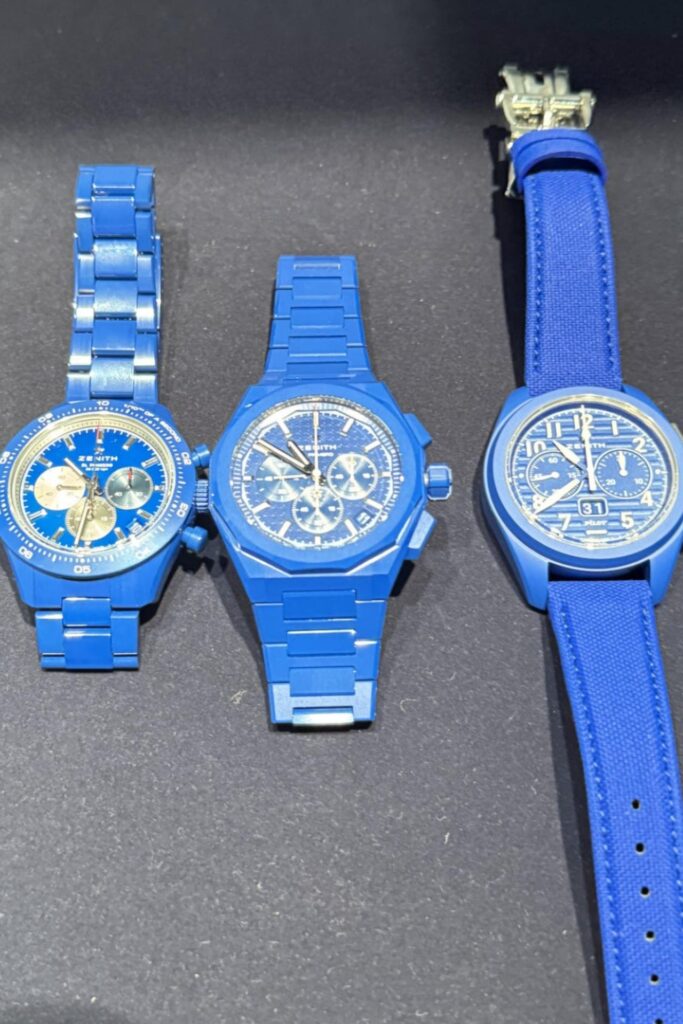
Any company needs strong visual branding to succeed.
Watch companies are no exception.
Zenith chose to launch three versions of its high-frequency chronographs – its Chronomaster Sport, Defy Skyline Chronograph and Pilot Chronograph – in vibrant “Zenith blue” ceramic, a colour it plans to double down on, going forward.
The precise blue is Pantone 661C – also used by the United States Airforce Academy, the University of Pittsburgh and Cos for t-shirts – FYI.
It was a good time over at Chanel
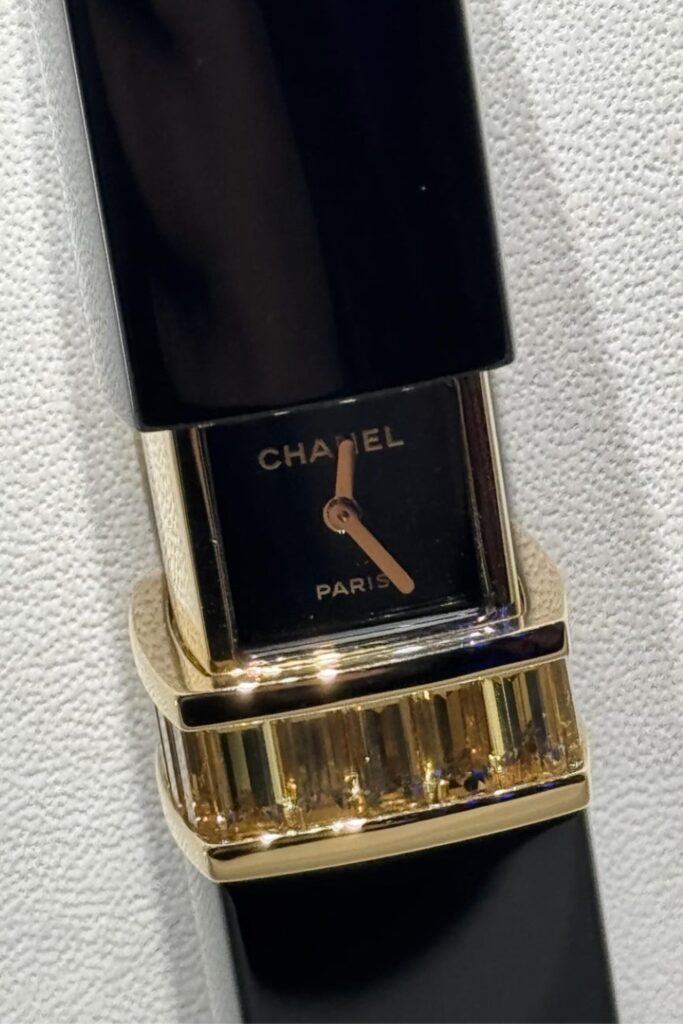
The booth where we never saw it coming? That would be Chanel.
Sure, it’s not the first brand you associate with men’s watches – or perhaps watches at all.
In 2020 the brand launched its J12, a black ceramic-based sports watch that found fans with female buyers hip to its genderless aesthetic, and helped reframe ceramic as a precious material.
Things took off more convincingly three years later with a white ceramic version, which also found favour with a small but influential group for men.
Now, for the 25th year of the J12, Chanel has launched a nine-strong collection called J12 Bleu – there is already a hit men’s fragrance called Blue de Chanel – though the watches are actually a combination of blue and black ceramic and steel.
The set encompasses sizes from 28mm to 42mm, automatic and quartz movements, and designs that include a version with a flying tourbillon with a diamond-set cage, as well as simpler editions with a matte ceramic dial.
The designs are individual enough to stand on their own, and the inky colour is great, clearly intended to meet an increasingly equally split gender market for luxury watches, halfway.
It was also a nightmare to get right, requiring 150 tests and 24 blues.
“From an economic standpoint, it cost a fortune,” Frédéric Grangié, president of Chanel watches and fine jewellery has said, possibly with understatement.
Like almost everything the company does, the design is a callback to the seemingly bottomless well of inspiration, Coco Chanel – the only fashion designer listed on Time magazine’s list of the 100 Most Influential Fashion Designers of the 20th Century – who took a then-daring approach of creating clothing that mixed black with blue. (Outrageous!)
Perhaps it was the influence of Mme. Chanel’s groundbreaking way with a colour palate, or perhaps I just needed to eat lunch, but I found myself equally entranced by some of the other items on display at the Chanel booth, ones that combined high jewellery with petite horology.
For example, the Secret Watch “Kiss Me” that resembled Chanel’s signature curved square lipstick case suspended from a yellow gold chain, which opened with an appropriately realistic and satisfying click to reveal a tiny clock.
Or the dinky diamond-encrusted pendant replica of Coco herself which, as a white-gloved assistant was summoned to demonstrate for me, concealed a little watch beneath her chapeau.
Chic.
Vacheron Constantin showed off the most complicated wristwatch ever made
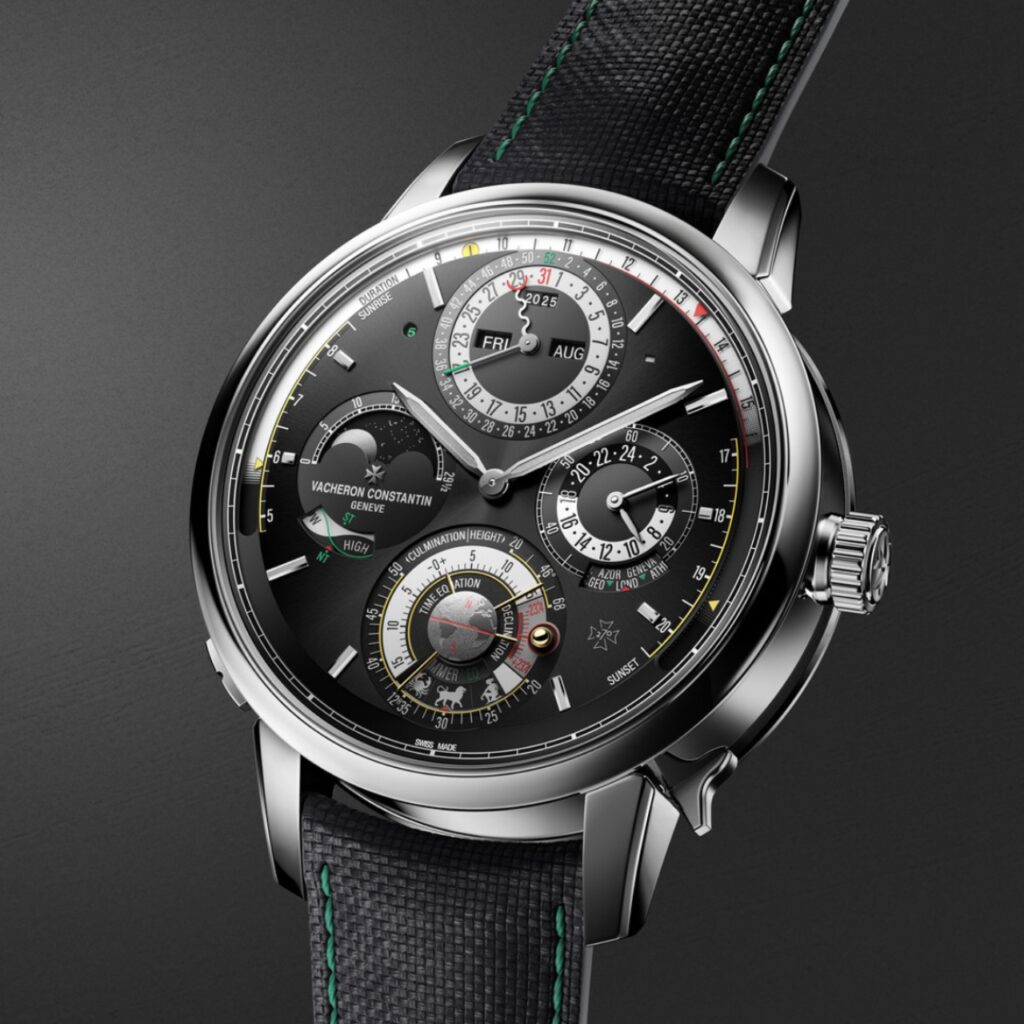
In watchmaking a complication refers to any function that goes beyond standard time-telling, things like a moon phase display, a GMT function or a chronograph.
Vacheron Constantin’s Les Cabinotiers Solaria Ultra Grand Complication managed to pack in a record-breaking 41 complications, its sub dials alone displaying up to five separate functions.
The 45mm double-sided timepiece is made of 18-carat white gold and brings together 1,521 handcrafted components, to allow for three modes of timekeeping: standard 24-hour time, solar time accounting for the Earth’s elliptical orbit, and sidereal time, a timekeeping system used by astronomers, measuring Earth’s rotation relative to distant stars, not the Sun.
Among the dozens of other tricks in this feat of miniaturisation were astronomical functions to track the sun’s position, height, trajectory and angle relative to the Earth’s equator.
The brand said it would provide an instruction book.
Bulgari showed off the thinnest tourbillon wristwatch ever made
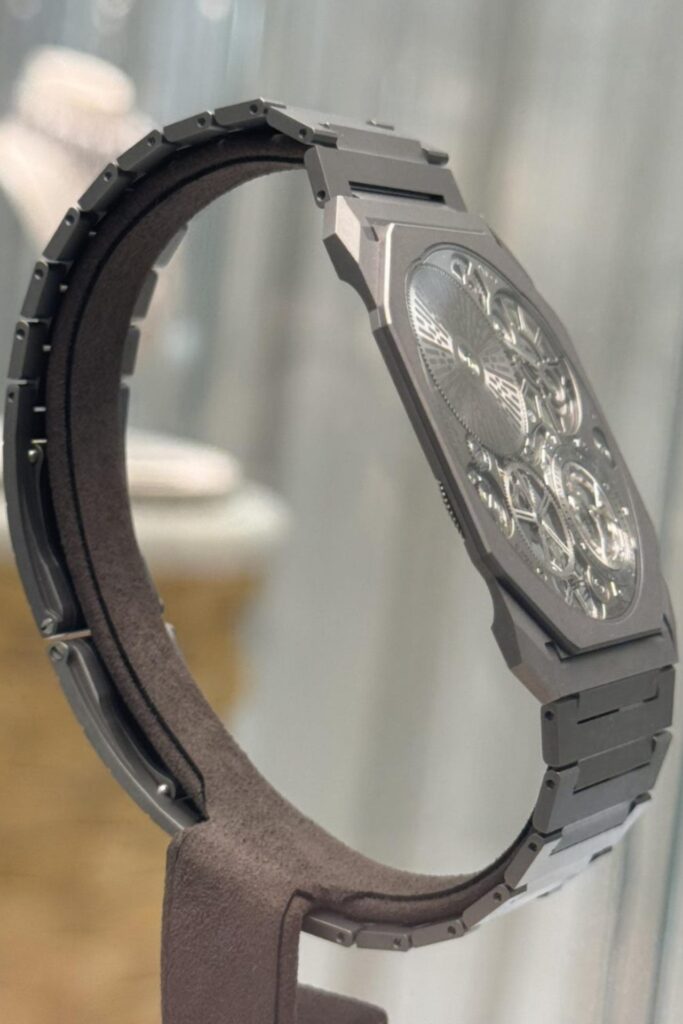
Bulgari is locked in a three-house race with Piaget and Richard Mille to see who can make the world’s thinnest [insert kind of watch here].
Having set and broken its own record for the thinnest time-only watch on the planet, the title for the thinnest tourbillon – the spinning device on the dial said to correct for the meddlesome effects of gravity – proved more elusive, having being taken by the 2mm Piaget Altiplano Ultimate Concept Tourbillon in 2024.
That changed at Watches and Wonders 2025, when the watchmaker shaved .15 of a millimetre off that record to produce the 1.85mm Bulgari Octo Finissimo Ultra Tourbillon which is exactly the same thickness as [insert sheet of paper/ US nickel comparison here].
Why would they do this? Because they can.
Grand Seiko showed off the most accurate mechanical wristwatch ever made
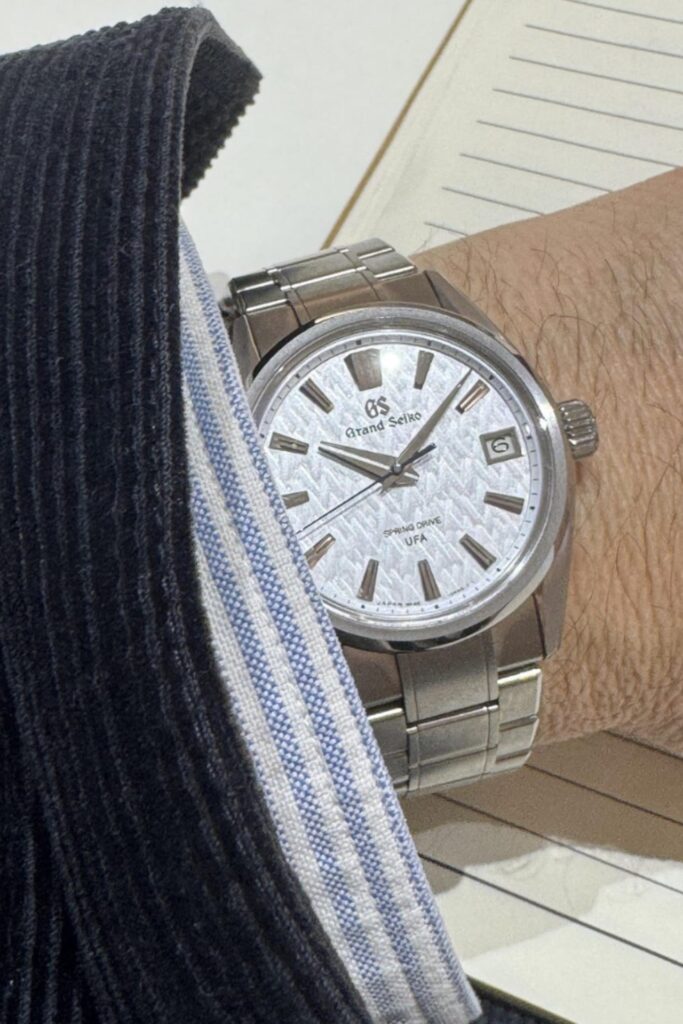
Actually, the “most accurate” tag was something other members of media claimed for this watch – during my appointment with Grand Seiko they were careful not to say that, despite some encouragement.
Whatever, the titanium ‘Ice Forest’ UFA Spring Drive is an automatic watch that is so accurate that the brand measures the time it gains or loses not per day, but per year.
To be precise, +/-20 seconds per year (Rolex chronometers proudly state their +/-2 seconds a day accuracy, by comparison).
It’s a watch so correct that the watchmaker has come up with its own award of merit, a certification it calls Ultra Fine Accuracy, or UFA, which is displayed on the dial.
Also: it looks really nice, and costs a comparatively reasonable £9k.
Watches are getting pricier
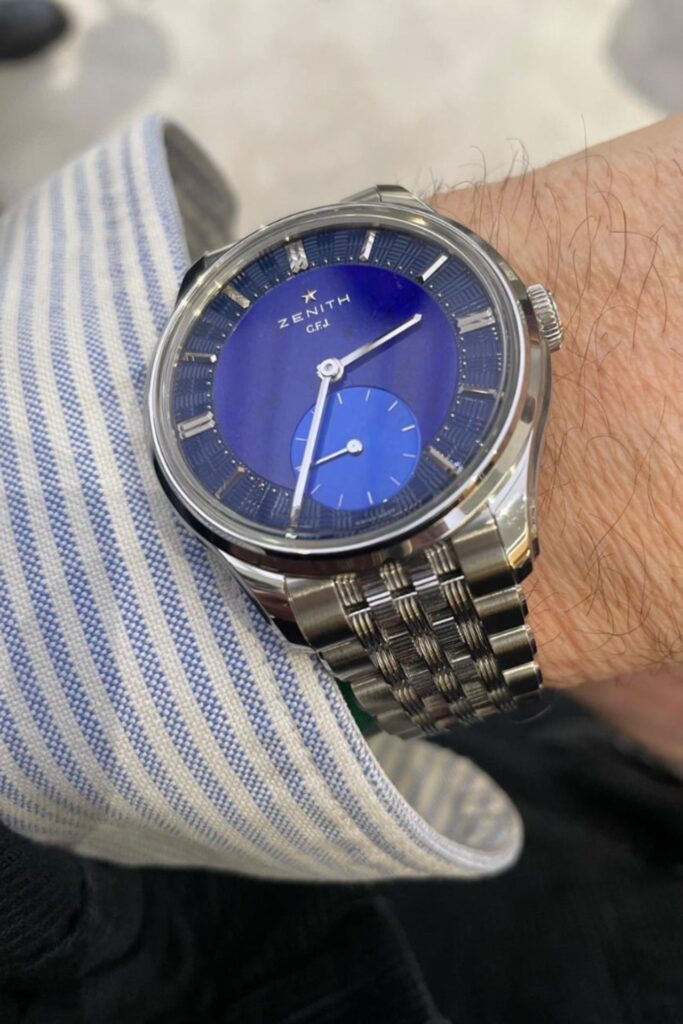
When the chill of an economic downturn sets in, sometimes the smart move is to produce less, and charge more.
How else to explain 2025’s trendiest watchmaking material, platinum?
This year we got platinum-cased updates of Patek Philippe’s Calatrava ref. 96, Vacheron Constantin’s Traditionnelle Openface and Panerai’s Luminor Perpetual Calendar GMT – that last one in not just platinum, but “Platinumtech”.
(The weight on your wrist says a lot about the weight on your wallet.)
Elsewhere, in celebration of its 160th anniversary, Zenith launched a brand-new watch line, G.F.J – named for its entrepreneurial founder, Georges Favre-Jacot.
This pillar will be defined by the use of precious metals and materials, as showcased in its launch edition: a platinum timepiece featuring a lapis lazuli dial adorned with a guilloché pattern – uniquely inspired by the bricks of Zenith’s own manufacture, surely a first in watchmaking.
It is being produced in a numerically appropriate limited run of 160.
With a price tag of $78,400 AUD on the alligator strap and $158,600 on the platinum bracelet, the G.F.J Calibre 135 is anything but inexpensive.
However, there’s also the option to swap the leather strap for a seven-row platinum bracelet with brick-patterned centre links, exactly doubling the price.
Yes, the bracelet costs as much as the watch.
The most popular place for filming social media content was in front of the Rolex booth

Reymond Weil goes from strength to strength
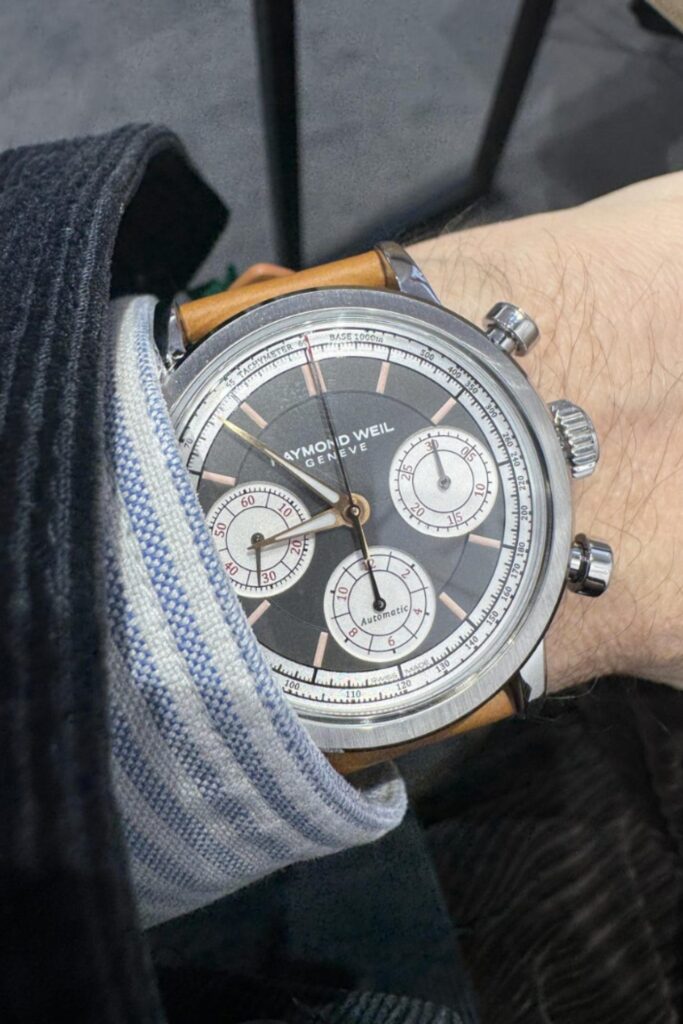
We still remembers where it was when it clocked the worst watch it has ever seen.
It was the first appointment of Baselworld, the Swiss watch fair that was a forerunner to Watches and Wonders, in 2018.
Straight off the plane from London and half-asleep it was confronted with the unholy spectacle that was the AC/DC Freelancer, a collaboration in its “Music Icons” series and a “tribute to the legendary Rock and Roll Hall of Famers, AC/DC” with a movement that allowed the wearer “to view the rocking ‘Alternating Current/ Direct Current’ balance within the timepiece”.
Reader, other “Music Icons” collabs in the series included The Beatles and David Bowie and were absolutely not what they would have wanted.
But let’s draw a veil – or, indeed, a Weil – over all that.
The family-run watchmaker has undergone a remarkable transformation in recent years, exemplified by its convincing victory at the 2023 Grand Prix d’Horlogerie de Genève for the striking AUD$3,723 Millésime Automatic Small Seconds with a sector dial.
On Wednesday, I sat down with Jeremie Bernheim, the family’s CMO, and there was plenty more to delve into.
“We used to be known as a quote-unquote mall brand”, he said. “But we are changing that. We want to make exceptional Swiss watches at a super-affordable price.”
Bernheim said the GPHG Award had turbo-charged their resolve.
“We can attribute one billion impressions to that. We’re now in 35 territories around the world, with the Millésime accounting for 25 per cent of all of our sales.”
Upcoming from the brand is its first complete calendar watch, the Freelancer Complete Calendar Dune Sunray, an extremely distant relative of the AC/DC monstrosity, as well as versions of the Millésime in a tri-compax chronograph iteration, and one with a red grape dial.
“We celebrate our 50th anniversary next year,” Bernheim said. “We have big plans.”
Hans Wilsdorf was a man of many talents
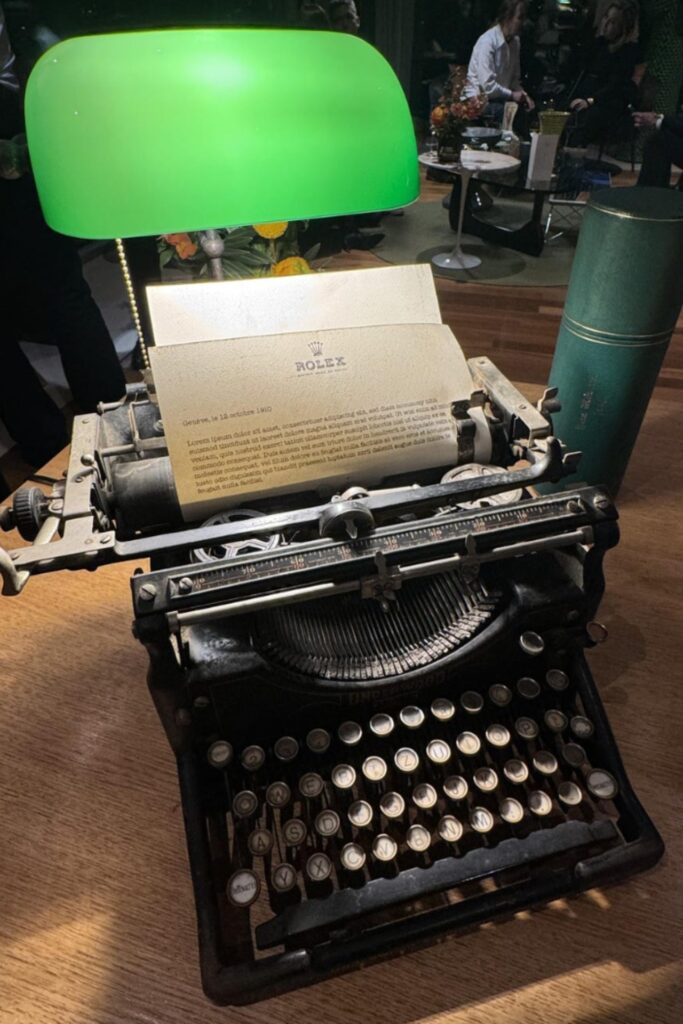
On Tuesday night, Rolex hosted an enjoyable evening at its HQ in the city.
The building – or the bits we were allowed into, at least – had been decorated by the brand’s long-serving in-house Architect designer, Massimiliano Morganti, the man also responsible for Rolex’s latest enormo-boutique in London.
Pride of place was given to the desk of Rolex founder Hans Wilsdorf himself, strewn with his ledgers, typewriter and other personal effects.
As one waggish member of our party noted inspecting the half-typed letter closely, it seems Wilsdorf wasn’t just responsible for popularising the Oyster case and the first self-winding mechanism with a perpetual rotor – he could also communicate in Lorem Ipsum.
Jaeger-LeCoultre didn’t disappoint

In its continuing bid to use the back of its reversible Reverso watch for increasingly preposterous ideas, Jaeger-LeCoultre announced its Reverso Tribute Geographic, a watch with a fully functioning word timer on its second side.
The display features the names of the 24 major cities engraved directly into the case back, with a lacquered ocean disc containing 141 hollows hand-filled with black lacquer for the world map decoration.
A rotating two-tone 24-hour day and night ring that lets you see the time everywhere in the world at once.
Mind blown.
Rolex released its first new watch family in 13 years
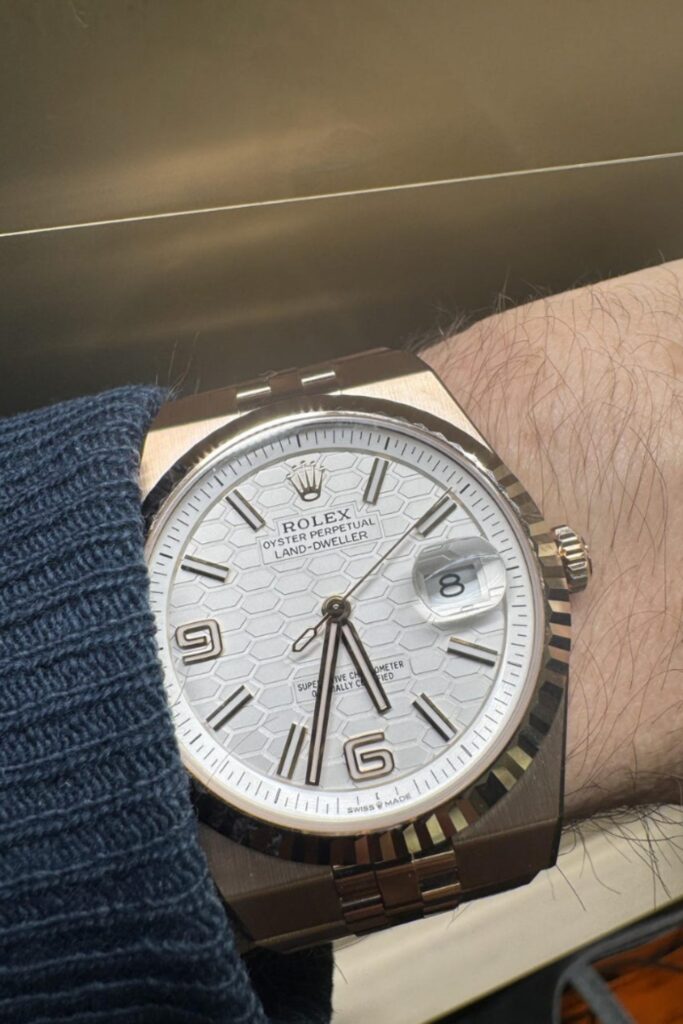
The Land-Dweller sits somewhere between the Datejust and the Day-Date lines, features an integrated bracelet and case reminiscent of its Oysterquartz models that came out in the 1970s, and has a honeycomb texture on its dial. It’s quite nice!
Hermès continues to enjoy itself
“In all other parts of our business we have fun with our designs,” a representative told me after the Hermès presentation. “I suppose it was only natural that we applied that to our watchmaking.”
The world’s premier purveyours of whimsical French luxury didn’t disappoint this year, with its Arceau Le Temps Suspendu and Cut Le Temps Suspendu, watches that allow wearers to pause the display of time without stopping the actual movement of the watch, a reinterpretation of a complication that debuted in 2011.
There was also the Arceau Rocabar de Rire, a watch with a horse on the dial that sticks its tongue out with the press of a pusher.
“Rire” roughly translates as LOL.
. . . and invent new ways to tell the time

Its Maillon Libre brooch-watch can now be pinned on the cuff of a jacket or worn as a pendant thanks to a leather cordlet accessory.
One brand bought a punchbag

Avant-garde watchmaker Ulysse Nardin devised an innovative method to test the durability of its new Diver [AIR], a 52g skeletonised high-horology piece crafted from titanium and carbon fibre, claimed to be the lightest dive watch in the world. They secured it to guests’ wrists and invited them to demonstrate their strength on a punch bag hanging from the ceiling of their booth.
The Boat Race is rebranding
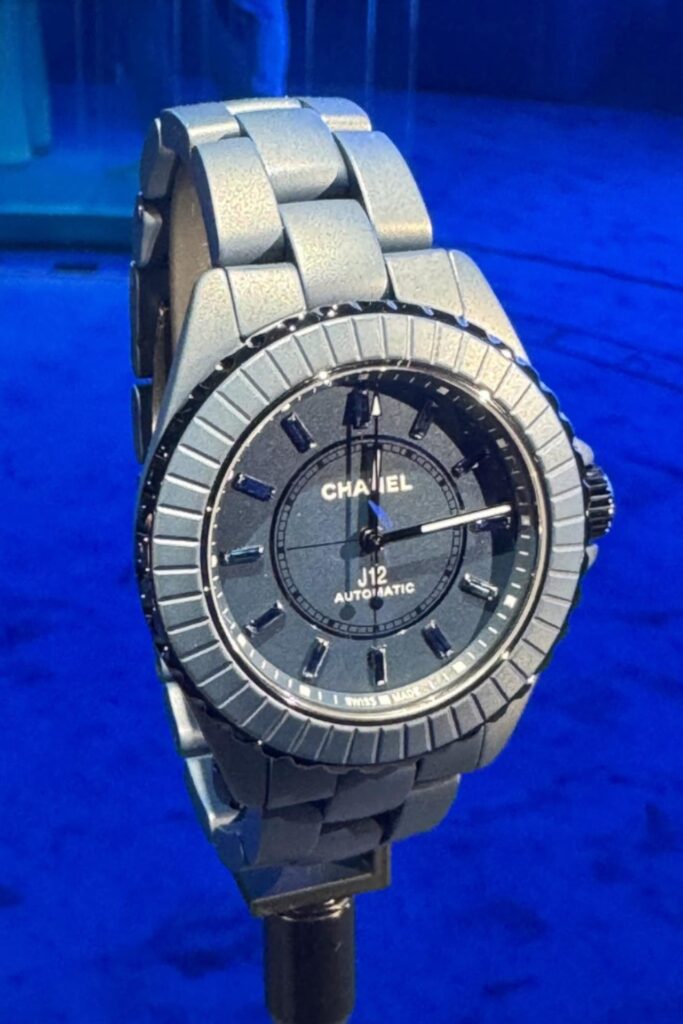
Something else we learned at the Chanel stand is about what everyone refers to as “The Oxford and Cambridge Boat Race,” the annual rowing competition between the two universities on the River Thames, though it is officially known simply as The Boat Race.
Starting with next Sunday’s event, it will be rebranded as the Chanel J12 Boat Race, with the brand serving as the official timekeeper.
Will both teams be wearing J12 watches?
“Before and after the race, absolutely,'” a representative from the brand informed me. “But during the race, every gram counts.'”
Bremont was cleared for take-off
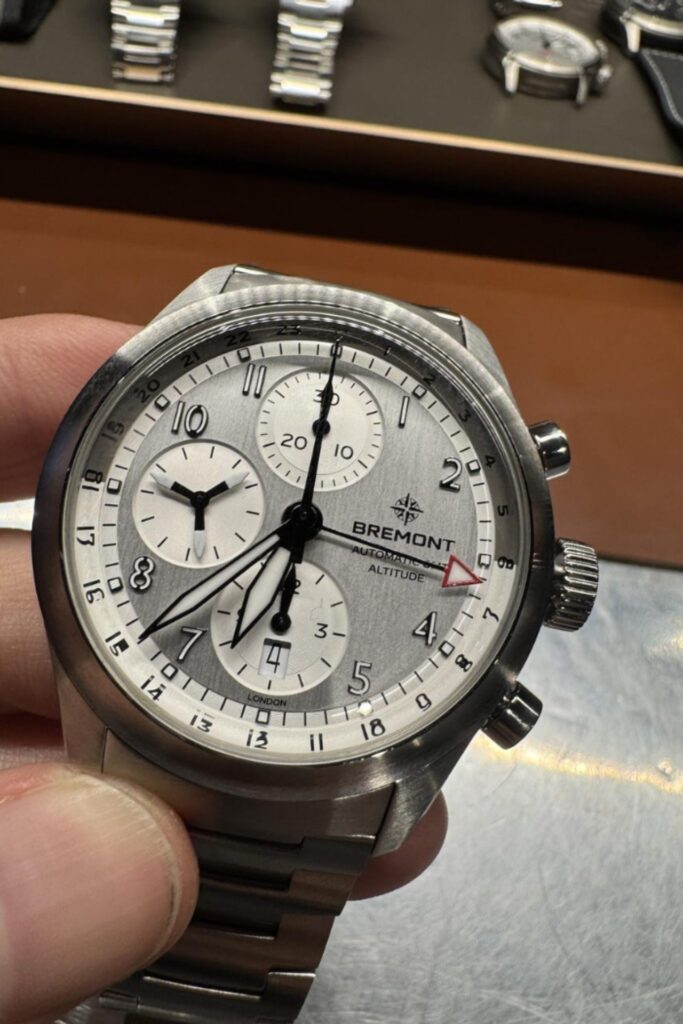
Britain’s Bremont suffered its annus horribilis in 2024, when the watch world collectively ganged up on new CEO Davide Cerrato for changing the brand logo and sidelining its aviation roots.
The turbulence must surely start to subside now, with a solid refit of the brand’s MB, the only pilot’s watch that can claim to have undergone the same trails a Martin-Baker ejection seat, hence its one-time slogan “tested beyond endurance”.
This week, three new monochromatic models were launched in that line, showcasing redesigned, slimmer, and lighter “Trip-Tick” cases: the Altitude MB Meteor, the Altitude Chronograph GMT, and the Altitude 39 Date.
“On purpose, we decided not to touch the aviation watches last year,” Cerrato told me. “Something that is so foundational to the brand you need to understand deeply, without just jumping in. The MB is really special watch.”
Of the three he said: “I think the Chrono has a kind of magic proportion. When you put it on the wrist it’s busy, while remaining very legible. Also, it’s quite unique because of the silver dial.”
After last year, it was almost a surprise to see Bremont back at W&W.
“I knew it would take time,” he said, not entirely convincingly.
It was a big year for clocks
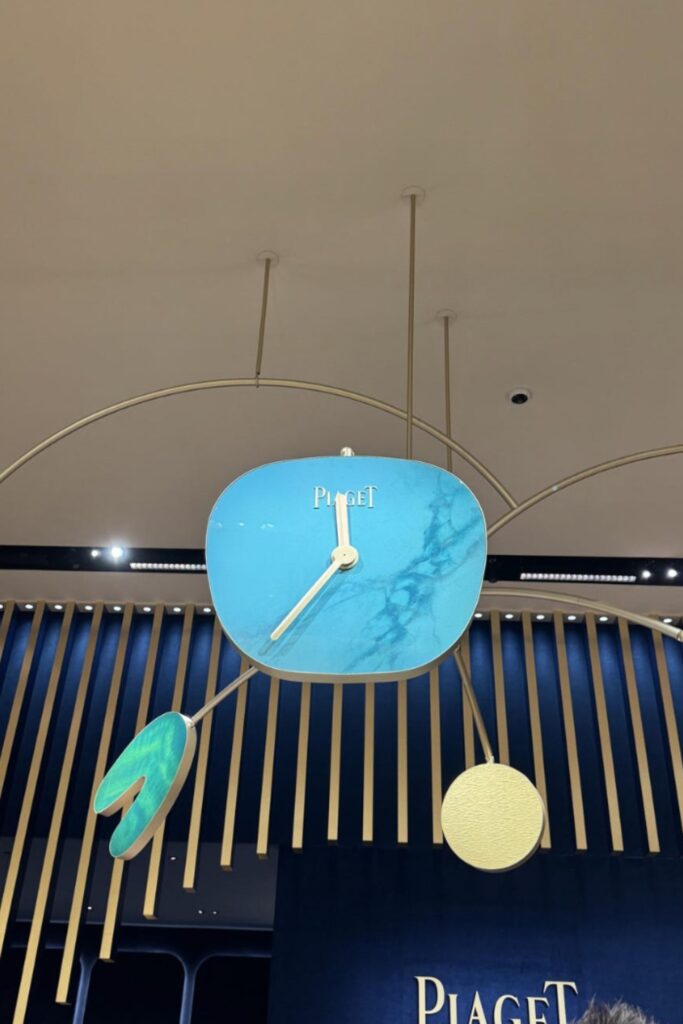
The fair wasn’t just about the watches.
At least two massively ambitious, and expensive, clocks were on the exhibition floor.
At Panerai, centre stage was given to its Jupiterium, a large-scale planetarium clock based on Galileo’s observations of the stars. The clock placed the Earth at the centre of a massive sphere, showing the position of the Sun, Moon, Jupiter, and its four Medicean moons. Its manual-winding movement then operated a perpetual calendar that drove the real-time movement of the orbital bodies.
At Chanel, there was the Lion Astroclock, a table clock with a diamond-encrusted lion underneath a glass dome which featured an astrolabe-style display of the hours and minutes inside, spining on a rotating orbit.
Both clocks has an asking price of AUD$3.6m.
Another huge clock hung over the Piaget booth, part of a mobile that riffed on the brand’s love of colour and shape. (This one wasn’t for sale.)
“The clock was actually made by the brand’s watchmakers,” a person from Piaget informed us. “So, it keeps very good time.”
Watches went hand in glove with racing cars

Tudor’s booth offered the chance to try and beat the clock changing tyres on a car belonging to the Visa Cash App RB Formula One Team car (or beat the computer on a retro arcade racing machine).
IWC’s stand showcased a car from Apex Grand Prix (APXGP), the fictional race team led by Brad Pitt in the upcoming F1 movie, which occasionally emitted fake smoke. The brand is launching a whole suite of watches that either appear in the film, or are inspired by it.
But Tag Heuer convincingly took pole position in the week’s motorsport face-off, with two cars on its stand, bookending its association with Formula One that began in 1968 and restarted in 2025 – one car had been driven by Ayrton Senna, the other by Max Verstappen.
They were sourced by the brand’s motorsport-mad heritage director, Nicholas Biebuyck.
Where did he get them from?
“A friend,” he said.
(It turned out to be a private collector in the UK.)
The pirates made land
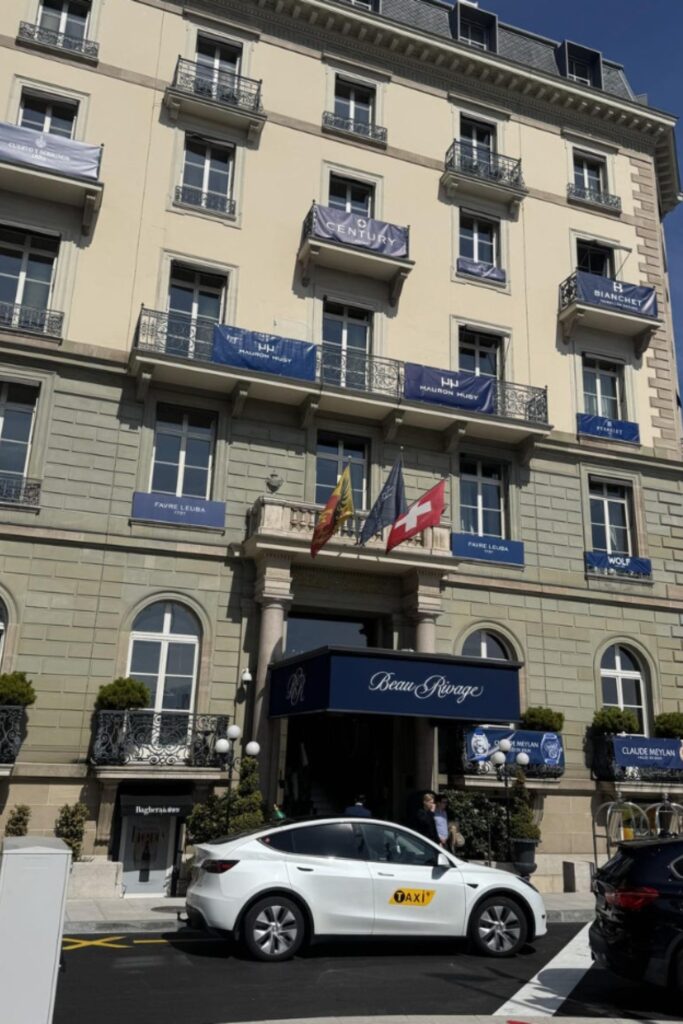
To the understandable frustration of the Watches and Wonders organisers, dozens of smaller brands flock to Geneva each year for the event, opting to skip the exhibition fees and instead setting up shop around the city to capitalise on the occasion.
(“We call them pirates,” Rolex CEO Jean-Frédéric Dufour said last year, speaking as head of the organising board, a name that immediately became adopted as a badge of honour.)
Don’t tell Dufour, but one morning we played a swift visit to the Beau-Rivage Genève, a hotel in the city centre on the shores of Lake Geneva, where more than 60 independent brands were spilling out of hotel rooms and hallways.
There it was impressed by Vangaurt, the eight-year-old Swiss luxury brand known for its six-figure avant-garde timepieces such as the Black Hole Tourbillon and the Orb.
Its team, including chairman Mehmet Korutürk, and creative director Thierry Fischer, seemed taken by the watch on About Time’s wrist by Studio Underd0g, the four-year-old British brand known for its three-figure food-themed timepieces such as the Watermel0n and the Fried Egg.
Fischer took it over to the window to see how the lume was applied.
“They always comment on our Instagram posts,” said Korutürk.
As it happened Studio Underd0g was also at the Beau Rivage, five floors below. Korutürk said he’d pay them a visit.
If the meeting resulted in a collab, you know where to send the cheque, boys.
They’re already planning next year
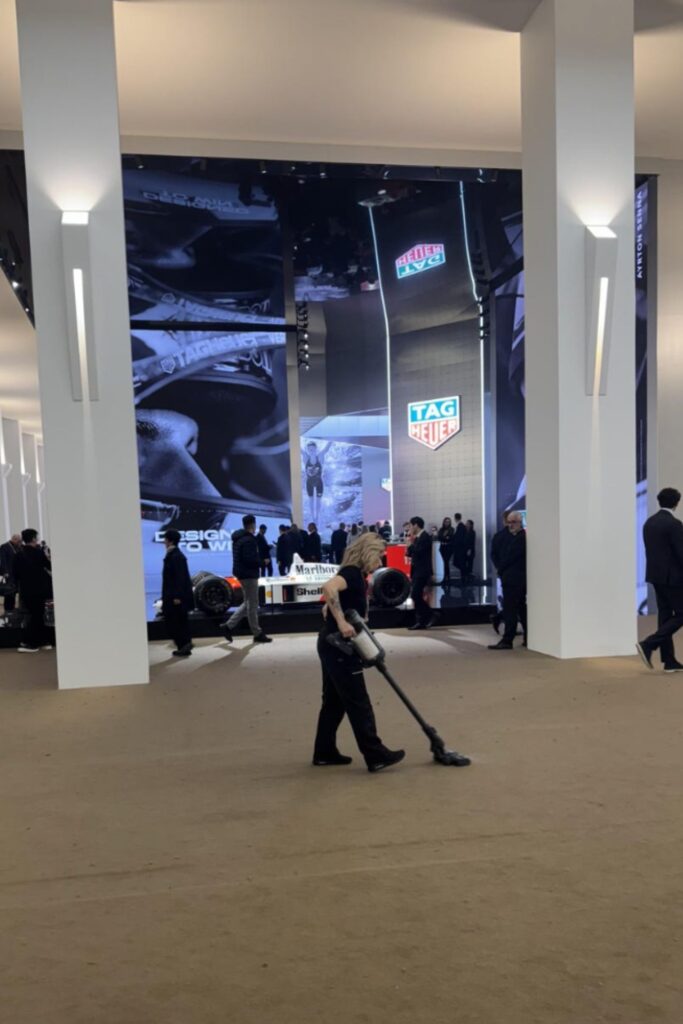
“We work with all the exhibiting brands throughout the year,” said Matthieu Humair. “The goal is to build this specific, unique platform. We are quite confident to have even more brands joining us – there has been a lot of interest already. The fair is always open to newcomers. Every year we are getting bigger and bigger. Watches and Wonders is the momentum for the industry.”
Brands played dress-up

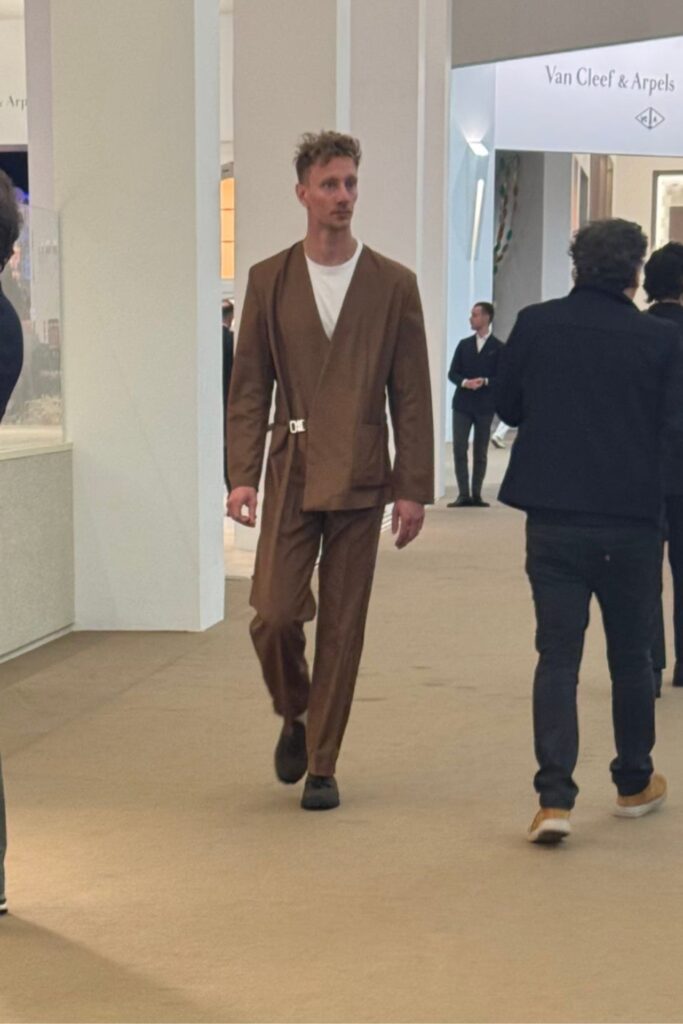




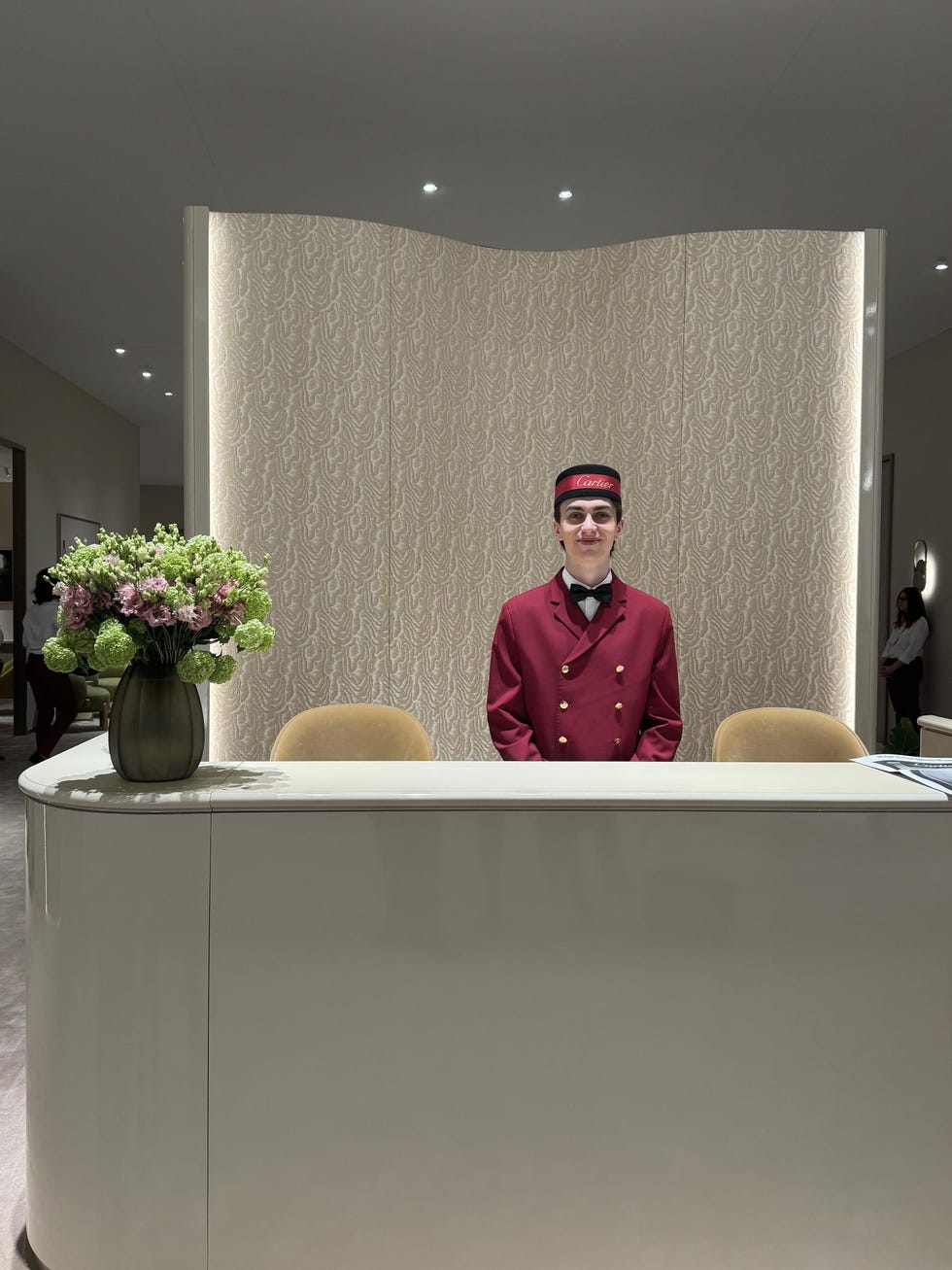
This story originally appeared on Esquire UK.
Related:
Our favourite new watches from Watches & Wonders 2025
TAG Heuer digs deep into its Formula 1 bag at Watches & Wonders ‘25





